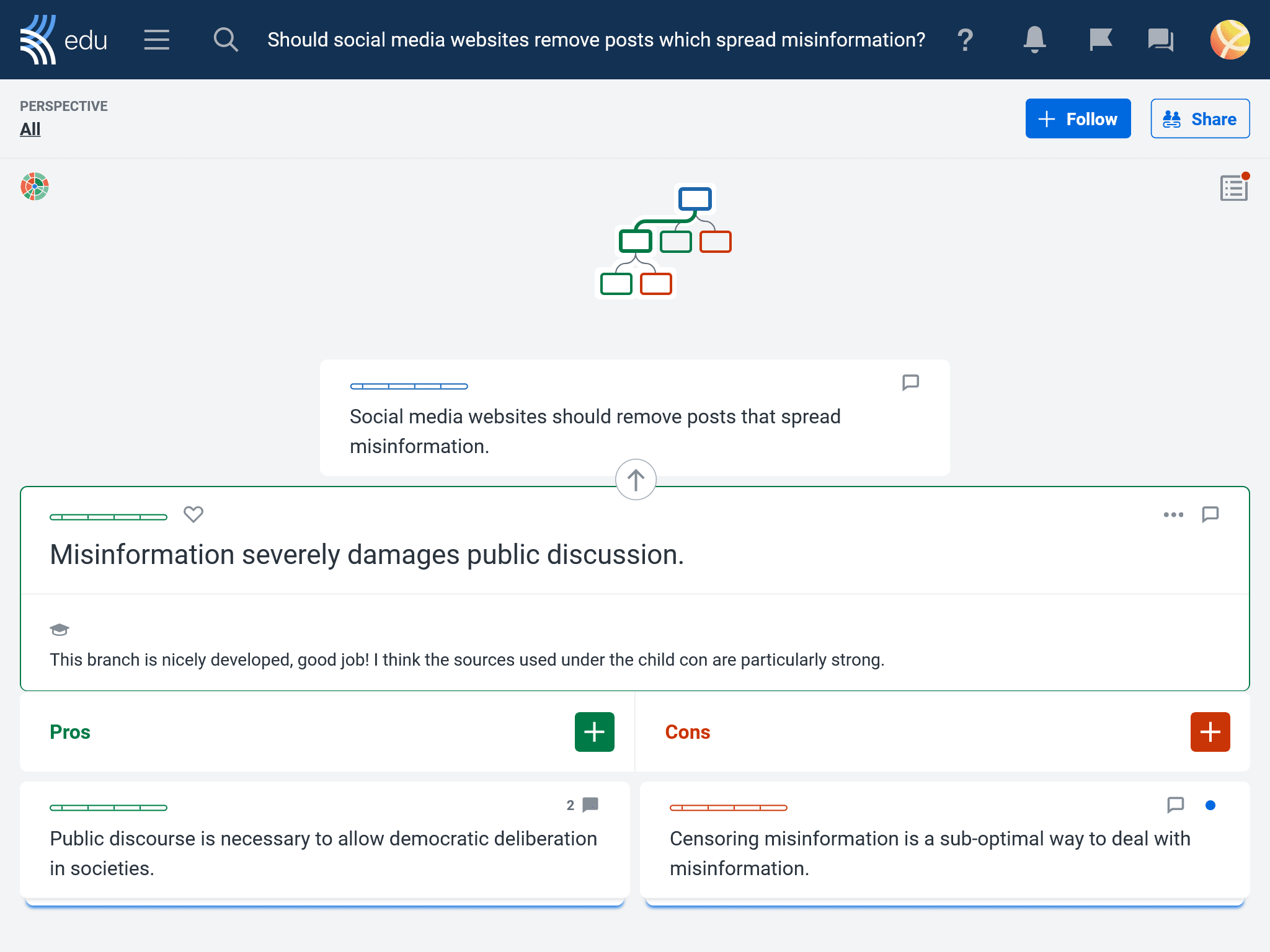Most teachers would probably agree that it is a mark of a successful lesson when their students are fully immersed in a task and show a real desire to participate. Motivation is the force which drives students towards their goals, and its impact in the classroom is significant.
Motivated students see value and purpose in their classwork, and engage more enthusiastically with the subject matter and activities. They are more likely to persist through challenging tasks, achieving better learning outcomes and deeper processing of information. Given the benefits, it’s no surprise that teachers spend a lot of time trying to nurture it. In this article, we’ll explore how to boost student motivation, and ways you can do so on Kialo Edu!
How can I boost student motivation in the classroom?
A number of frameworks have emerged from the extensive research done on motivation. These are some common factors that teachers can use to guide their practice.
In an ideal world, students’ motivation would come from within. Although extrinsic motivators can also push students forward, it is their intrinsic motivation that typically sustains longer-term effort and builds lifelong learners.
Most importantly, students need to see the value and relevance of tasks and class content. They need to feel an element of control or autonomy over the learning process, whereby they are active participants in their own development. Being challenged in a supportive environment to obtain achievable goals helps students believe in their own ability to complete demanding classwork.
At Kialo Edu, we want students to be actively engaged in discussions that challenge them to explore the nuance in debate topics. We’ve outlined some of the ways by which teachers can foster motivation and engagement in their classes, and where Kialo Edu discussions can support such approaches.
1. Give learners choice & variety in activities and assessments

Even when teachers need to keep a firm hand on class content, they can still introduce an element of choice and variety into class activities and assessments. By giving students a sense of autonomy within a structured context, teachers encourage them to take ownership of their learning. This can in turn be very motivating for students.
Kialo Edu discussions allow students that measure of control. The nature of the discussions lets students choose how to interact with the thesis and which claims to explore and build out. What’s more, since discussions are so quick to create, teachers can easily offer different options within the content area they wish students to explore by changing the thesis.
Our discussions are also a great way for students to demonstrate their understanding and analysis of a topic as an alternative to an argumentative essay so they can showcase their strengths in different formats.
2. Include collaborative activities to activate engagement
We can also include increased motivation among the many benefits of collaboration. Not only can working in small groups cultivate a sense of community in the classroom, but the shared responsibility also leverages some gentle social pressure to encourage participation. When students work together, they are actively involved in the learning process and can learn from and support each other. It can also simply be fun!
You can use Kialo Edu discussions to support great collaborative activities in the classroom. When students are building out a discussion together, they can use this as a central point to organize their ideas and explore concepts in depth together. Using Kialo Edu discussions as a structured space allows students to take a measure of ownership for their work, while you can also keep an eye on how they’re progressing!
3. Use feedback to motivate students
Setting high expectations motivates students to go that bit further, provided that they believe in their abilities to do so. Teachers can give students’ confidence a helping hand by using constructive feedback to guide students in the right direction, as well as to recognize the effort students are putting in. Helping students see that their persistence and effort are worthwhile reinforces their sense of self-efficacy and determination to meet their goals.
In Kialo Edu discussions, you can offer Teacher Feedback directly on your students’ work in real-time. Thus, you can step in and give that bit of extra support when you see it’s needed. Furthermore, the flexibility of this feature means that teachers can control the visibility of the feedback. This means that feedback can be kept between you and the individual student if preferred, or you can hide it until you’re ready to release it to all students at the same time — particularly handy if the Kialo Edu discussion is part of their assessment.

4. Praise students sincerely to continue motivation
Praise is also a powerful motivator when used judiciously. It needs to be sincere and focused for students to believe in it. Just like feedback, when it focuses on the process over the outcome, it can help support the development of a growth mindset to help unlock students’ potential.
With Kialo Edu discussions, teachers can comment on students’ claims to show praise and recognition. This is particularly useful if you had decided to keep your feedback private, but wanted to praise a contribution more publicly.
5. Showcase the relevance of the class content
Teachers can boost student engagement by linking curricular content to students’ personal worlds. Connecting the class content to their interests and goals, or showing how it relates to the wider real-world issues that affect their lives, can prompt students to value their learning. Class work that includes problem-solving activities and practical applications can spark student curiosity and boost motivation.
With Kialo Edu, teachers can facilitate thoughtful and meaningful discussions and activities that connect the class content to the outside world and current events, such as climate change issues or the costs and benefits of AI. Our discussions help students break down complex issues into manageable chunks, allowing students to draw on their personal knowledge and experiences, as well as cross-curricular content, to see the bigger picture.
They’ll practice perspective-taking alongside evaluating the information sources they are bombarded with every day. And, of course, there is always the option of holding discussions on their personal interests, whether that’s debating the best video game console or fantasy book series, or exploring the pros and cons of social media.
We know that though motivation is one of the key concerns of many educators, it can be quite difficult to boost! Motivation isn’t a one-size-fits-all and we would love to hear about the strategies you employ in your classrooms. Please do get in touch on social media, or directly at feedback@kialo-edu.com.

